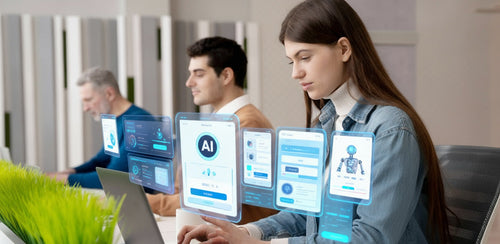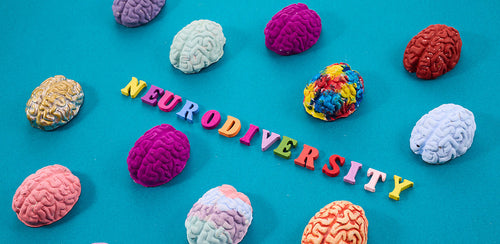Share
The Ultimate Guide to Competency-Based Training Programs
Bradford R. GlaserCompetency-based training (CBT) directly helps with your job performance by focusing on the real skills that people need to use at work. This lets employees master their abilities at their own pace with clear standards that show what they need to achieve.
It's about matching training to actual workplace tasks and measuring tangible results. You'll need the right tools for technology and a culture that supports continuous and real skill development instead of traditional classroom time.
It's time to build training that produces real results in the workplace and also creates measurable changes. Your employees deserve nothing less than that. Let's jump in and make it happen!

- Boost employee engagement
- Improve employee development
- Target employee strengths
Table of Contents
Definition and Purpose
You'll need to acquire some of the skills instead of just sitting through endless lectures. Just like how you should learn to drive, you wouldn't only read about handling a car. You need that actual time behind the wheel to prove you can drive safely.
You can control your own learning pace in this type of training. You're able to move ahead faster or take the extra time without any kind of pressure from other classmates. You'll work on each skill until you have mastered it – if that takes a few days or even a few weeks.
Industries ranging from healthcare to manufacturing have adopted competency-based training. A barista training program gives a clear example. You have to show your ability to make the perfect latte, manage the espresso machine like a professional, and give good service instead of only memorizing coffee recipes from a book. You need to nail these skills in authentic situations as part of the training.

More schools and businesses are switching to this type of strategy because it produces concrete results. Traditional programs start with logging classroom hours. But this newer strategy turns that old model on its head. Your timeline isn't the thing that matters.
You might master one skill in three days or even three weeks. Your ability to do tasks correctly matters most when it counts.
Your feedback will look different from standard letter grades. You'll receive comments on your performance that show where you're excelling and which areas need more effort. This type of feedback helps lead your growth in ways.
Steps to Create CBT
Competency-based training defines the success of your organization. You'll need to find out the exact skills your team needs to be good at their jobs. These skills will become your main targets to work toward.
Your next step is to map out the skills and knowledge areas that matter most. Make sure to get input from your team members throughout this whole process.
You'll need to spell out what good performance means for each skill. These goals should be crystal clear so your team knows what they're working toward. The standards can act like the goalposts for your team to shoot for.
Now comes the big part – evaluation. You'll find the differences between your team's latest skills and where they need to be. Regular check-ins help to keep tabs on progress and to find any problems that pop up. It's not about catching people doing things wrong but figuring out ways to help everyone grow and learn.

Your training has to help with those skill gaps that you've already found. In truth, every person learns differently, so you might need a few different teaching methods to get the message across. Some of your team members might learn best by doing things, while others might like watching videos or working closely with mentors.
The real priority here is matching up each person with the way they like to learn best. Technology has some ways to track everyone's progress. Modern learning places give you a clear picture of each team member's progress.
They show you which areas might need more work. These tools help everyone stay on track and actively connected to their own learning process. Competency-based training comes with flexibility.
Your program can adapt as your organization grows and continues to evolve. You'll need to check in with everyone involved to make adjustments to your training strategy. Just remember that what clicks for one team might need some small adjustments in order to work well with another team.
Benefits for Organizations
Your business could double its productivity just by switching to this targeted training strategy. You can start to get better results with competency-based training programs compared to the traditional employee development approaches. The proof is right there in the numbers – just get started with those big jumps in performance and revenue coming in.
The power of competency-based training is in how it zeros in on what your employees actually need to learn. Your team won't waste any time sitting through the boring and generic workshops anymore. Instead, they'll pick up the new skills much faster and remember them for longer because the training matches their actual job duties. They can feel motivated when they see what kinds of skills they need and why those skills matter for their work.
Your employees will get way more excited about learning with these programs, too. The numbers do back this up – more than 90% of businesses using this strategy are committed to helping their people grow.

An investment will bring you some serious results. Your company will probably see its training investment pay off in a big way as your team gets better at their jobs. You'll often spend quite a bit less on training since your people only start with what they actually need to know. These savings fit great with any company (no matter the size).
Regular training programs can sometimes miss the mark because they treat everyone in the same way. Competency-based training works way better because it adjusts to how each person learns best and to how fast they pick up concepts. Your team can breeze through the material they already know and take more of their time with the harder topics.
Technology makes this kind of training even easier. Online places will track how everyone's doing to give feedback. Your managers can find the areas where people need more help and change the training plans on the fly.
This will give you skilled and confident employees. Your employees will feel more protected in their roles when they know what's expected of them and how they can grow. Your teams will start working together better because everyone understands their strengths and opportunities for improvement. This will give you a way more positive workplace.
Examples of CBT Programs
Competency-based training programs can help employees learn about job skills instead of staying stuck in the theory of it all. These programs can also come in different forms and sizes.
Technical training usually comes first in these workplace learning scenarios. Your software developers need some time in the coding labs to work with things like Python or Java. Sales teams should practice with their CRM systems so they can track their customers better. Your people have to feel comfortable with the tools that they'll use in their work.

The goal of leadership development focuses on building people skills that managers need. Your new leaders work through scenarios to practice making tough calls. They practice building strong teams, too.
Businesses often connect their new managers with experienced mentors who can share their wisdom and expertise. Your teams may face lifelike situations in customer service training. Your staff practices handling upset customers through role-playing that feels just like the real experience. This kind of practice helps them stay cool under pressure.
It helps them address problems faster, just like they'll need with actual customers. Your staff's care for patients ties directly to healthcare training quality. Your nurses practice giving injections and assessing patients in safe and controlled settings. Doctors also work through tough medical cases with experienced supervisors before they take on real patients.
Your manufacturing employees need training on machines and safety items. Your workers learn the operating procedures through step-by-step demonstrations and guided practice. Quality control standards eventually become automatic for them after enough repetition and practice.
Your store staff's success often can depend on customer service skills and good product knowledge. Your store staff practices everything from processing returns to handling tough customers and suggesting good product options. They learn to work faster and accurately while keeping a friendly smile throughout every customer interaction.
Modern technology is changing how your employees learn these different abilities. VR simulations let them practice risky tasks without needing to find any real danger. Online places let you track how well they're doing and even give feedback.
Mobile apps make it easy for your workers to brush up on their skills whenever they want or have time.
Design and Delivery
Your learners' needs can help to drive the design of any competency-based training program. People learn in different ways and through different methods – some might need extra time to get to know concepts, while others might like watching videos over reading text. You need to create training that can adjust to these different learning styles.
Breaking the content into smaller chunks helps your learners digest the information better. Just like you wouldn't eat an entire meal in one bite, your learners shouldn't try to manage everything all at once.
You can create some bite-sized modules for them to work through at their own pace, and this gets them involved without them feeling overwhelmed. Modern training programs depend heavily on technology. Management systems can track their progress and help deliver your content, while mobile apps give your learners the ability to learn anywhere.

Video tutorials can explain tough topics in an easy way – keep in mind that some of your learners might not always have internet access. Your learners are able to show their knowledge through tasks. Projects and simulations can let people show what they have learned in action.
These give you a clearer picture of their abilities than standard tests could ever give. Group activities help to add depth to your learning program. Your learners grow through sharing their experiences and learning from each other during collaborative sessions.
Even remote teams can connect through tools like Zoom or Microsoft Teams. You also strengthen their skills through these kinds of interactions. Your choice of format shapes how successful your training program will be.
Learners lose interest when content is too rigid or boring. Interactive elements like simulations and visuals keep people involved and help retention better than plain text. A well-designed program includes online and offline access.
Some of your learners might need printed materials or downloadable resources, while others will like accessing everything on their phones. Multiple delivery methods make sure that everyone gets the most out of their training experience.
Challenges and Alternatives
You need some resources to build a competency-based training program successfully. Your organization will face challenges with time, money, and adequate staffing requirements right from the start.
The first serious challenge is for everyone to accept this new system. Your employees probably feel comfortable with the traditional training methods that they already know and use.
Some of your staff members might also resist these changes. Your technical setup needs to be reliable and tough in order for competency-based training to work well. Most organizations don't have the right systems in place yet.
Your staff members might have a hard time learning and changing to any new tech tools you introduce. Graduating can become quite a bit harder in competency-based programs. Instead of the basic multiple-choice questions, your assessments will mean projects and skill demonstrations.

Your teachers and trainers need some extra time and preparation to plan out assessments. Regulated industries like healthcare and aviation have extra paperwork requirements. Your training programs have to meet strict industry standards.
You'll need documentation for every single detail that matters. Money plays a big part in creating these programs. Small organizations may have a hard time affording the right tech tools and other resources.
Even bigger businesses will often pause before they completely change their training strategy. When you find qualified instructors, it can add another challenge. When you teach in a competency-based system, you'll need expertise that traditional trainers might not have.
Your instructors need subject knowledge combined with assessment skills, which makes them hard and sometimes expensive to recruit.
Recent Trends and Statistics
The way that the training programs work has completely changed since AI and remote work became more mainstream. Businesses now like to prioritize skills over traditional qualifications when they adjust their employee development strategy.
The numbers are clear – 94% of you and your coworkers will need a very new set of skills by 2030. This dramatic change means that your company probably has flexible learning options through online places and virtual classrooms. You can learn at your own speed.
AI has changed the ways training delivery works in the workplace. Systems can find your learning needs and then create personalized lessons just for you. You'll always know where you stand, too – these systems track your progress as you go along.
You'll most likely see short, quick-hit lessons instead of having to sit through day-long training sessions. Your learning experience at work now comes in much smaller and digestible chunks.

Businesses even let you practice scenarios safely through things like virtual reality. Virtual collaboration and online communication skills are a big part of most roles. People skills matter more than ever now in the hybrid workplace. It's no surprise that 92% of pros rank these types of soft skills equally with technical abilities.
One-size-fits-all training methods belong in the past. Your employer probably can give you the option to choose what to learn and when to learn it. This strategy keeps you involved and excited about building new skills. And by 2025, most businesses (57%) will start with AI training. The technology moves forward so fast that businesses have a hard time keeping up.
Your career now will need continuous skill updates as technology and job requirements change. Modern employers will probably expect you to evolve alongside your latest position. It'll cause a growing gap between the newest abilities and future needs.
Improve Your Team Competency
The future of workplace learning is changing in some fun ways. Interesting things can start to happen when employees learn at their own pace and practice the skills that matter most for their actual jobs. Businesses that make this kind of change are seeing better results – happier employees and stronger teams based on the numbers.
Your training environment deserves some thoughtful consideration as you start to plan out your strategy. Get started by seeing how your latest strategy could adapt to give employees a little more control over their own learning process. The changes don't have to happen all at once – even some small steps toward giving more training can help support team performance and engagement.

We at HRDQ know about these workplace challenges firsthand through helping teams grow and develop over time. Our Developing Your Direct Reports Customizable Courseware helps managers build stronger teams through focused coaching and development.
The program can give you some tools to develop employee strengths, set clear goals, and create long-term performance growth. Built-in assessments and reflection activities help to support the type of skill-building that drives competency-based training forward!
Request a free preview of the course to see how Developing Your Direct Reports Customizable Courseware can meet your needs!




















































